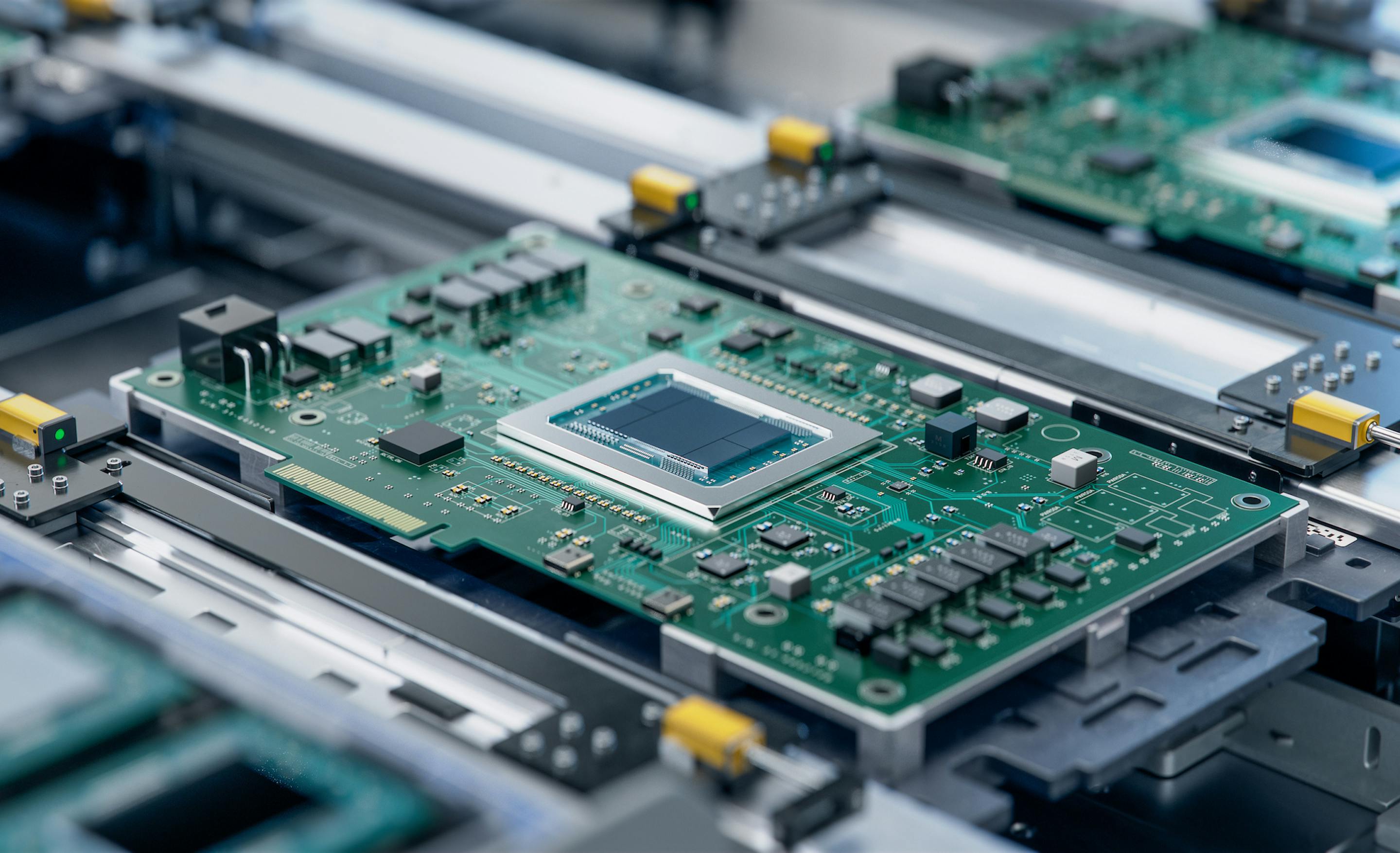New Servitization Models: A Playbook for Business Model Change
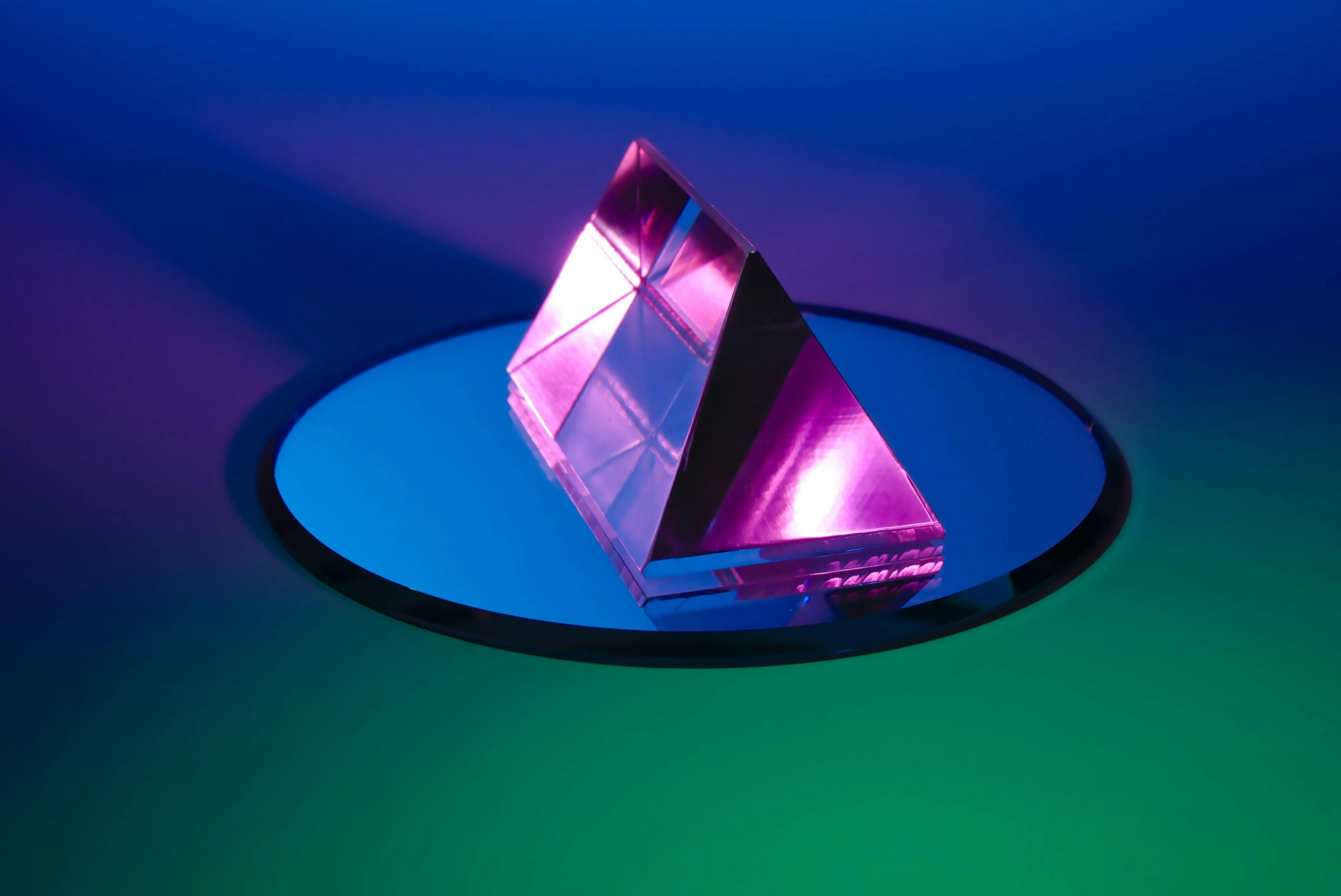
Hardware-as-a-Service (Haas) and Equipment-as-a-Service (EaaS) are two recent concepts that are collectively abbreviated as a catch-all term: Everything-as-a-Service (XaaS).
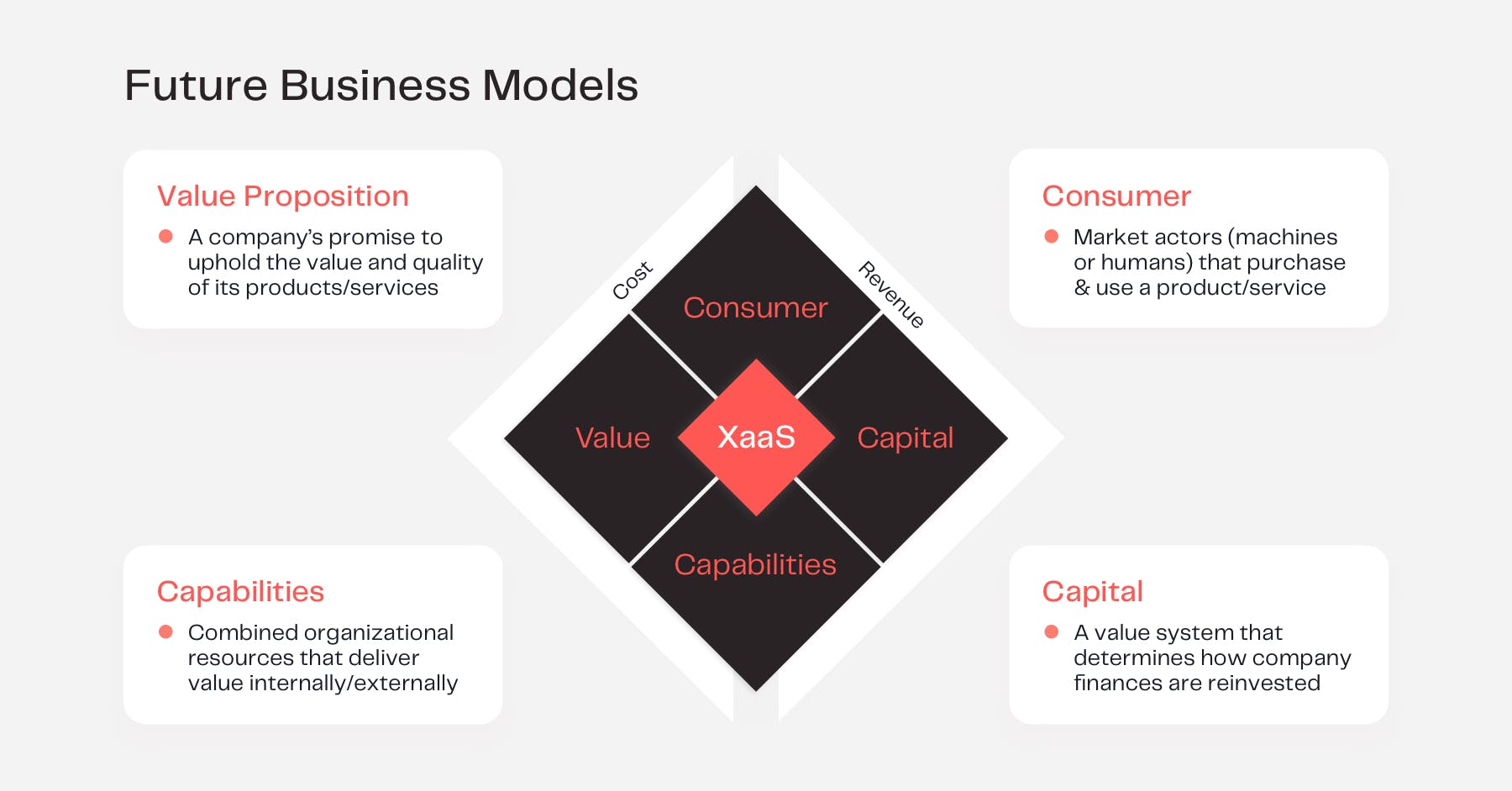
Since 2005, the introduction of cloud computing has been a driving force behind the rise of XaaS; a business model that equips users with modern hardware, accompanying software, installation, maintenance, upgrades, and support services as an all-in-one bundle charged as a monthly subscription fee.
Consumers only pay for the value that they get from an asset (equipment), which means that users don't pay for the large upfront hardware investment, the complex maintenance costs, or the repairs of broken hardware.
Although the concept has been around for many years across various industries (home routers, printers and copier machines, medical equipment, aircraft engines, etc.), the terms HaaS and XaaS were only coined in the last few years as a result of emerging IoT technologies.
IoT is making machines more intelligent and now the software has become more of a differentiating and defining factor than the hardware of an asset. On one hand, consumers are reaping the benefits of new service offerings and fewer liabilities from decreased asset ownership, and on the other, XaaS is serving as an additional revenue engine for innovative enterprises.
Real-world Examples:
- B2B XaaS Businesses
Rolls-Royce Power-By-Hour
HP IT Devices as a Service - B2C XaaS Businesses
Home appliances (E.g.: washing machine, dryer, dishwasher as a service)
Coffee-as-a-Service
Addressing Customer's Pain Points: Opportunities and Challenges
1. Capital Expenditure
Customers want to avoid spending large sums of money upfront. XaaS enables customers to convert significant amounts of capital expenditure (CapEx) into a more manageable monthly operating expense (OpEx), freeing up cash flow and providing additional working capital. However, for the XaaS provider, this is the opposite. Depending upon the equipment cost and monthly service fee, it may take several months for XaaS providers to reach the break-even point of a single piece of equipment. Service providers often need a relatively deeper pocket of cash or adopt a mixed model where the customer pays part of the upfront cost.
2. Subscription Fee
It’s significantly costlier for a consumer to own equipment in comparison to a XaaS subscription. Many XaaS providers are establishing an automated questionnaire-based cost-saving calculation interface for consumers. If available, providing references for technology upgrade costs, average maintenance costs, and increased productivity in the cost-saving calculation can bring more confidence to consumers and increase the chance of brand loyalty.
3. Service and Maintenance
The maintenance and upkeep of an asset are unpredictable, costly, and time-consuming. The average repair and maintenance costs are between 50%-80% of the total lifecycle cost of industrial equipment. Equipment failures and accompanying software crashes disrupt business and result in time and productivity losses, leaving customers dissatisfied. As a solution to this, a Service-level agreement (SLA) for customers will ensure the high availability of equipment output and repairs done within a short time frame. To achieve improved operational reliability and service integrity, XaaS providers will need to shift their focus to high-quality software and hardware components, as well as to predictive and preventive maintenance mechanisms, rather than reactive ones. Sophisticated XaaS support and user training programs are more important than they used to be in traditional business models.
4. Upgrade to State-Of-The-Art-Technologies
Electronics are at the heart of modern technological advances. Moore's law observes that computing power doubles nearly every 2 years. It's not just businesses that want to leverage technological advancements for a competitive edge in their industrial output, but consumers also want to keep up with the latest cutting-edge technologies that improve aspects of their daily lives. Equipping customers with the latest software and hardware technologies is a strong selling point in business, but a challenge in terms of cost. In the presence of competition, a product or system upgrade is essential in retaining customers, who are often just one mouse click away from terminating the subscription and switching to a competitor.
5. Scalability
XaaS provides the customer with great scalability. As the business grows or there’s a change in consumer behavior for a XaaS-B2C use case, subscriptions can be modified flexibly and in a cost-efficient manner. For XaaS providers, vertical scalability needs can be addressed without supplying any additional hardware. However, fulfilling short-term horizontal scalability becomes more difficult as new equipment needs to be manufactured, installed, returned, refurbished, and then maybe lying in inventory for a long time.
Business Transition Strategy - From Selling Equipment to XaaS
A robust digital platform is key to success in the XaaS space. In addition to legacy digital platforms for selling hardware, services, and solutions; measuring and billing components are added based on equipment output (the real value to the customer).
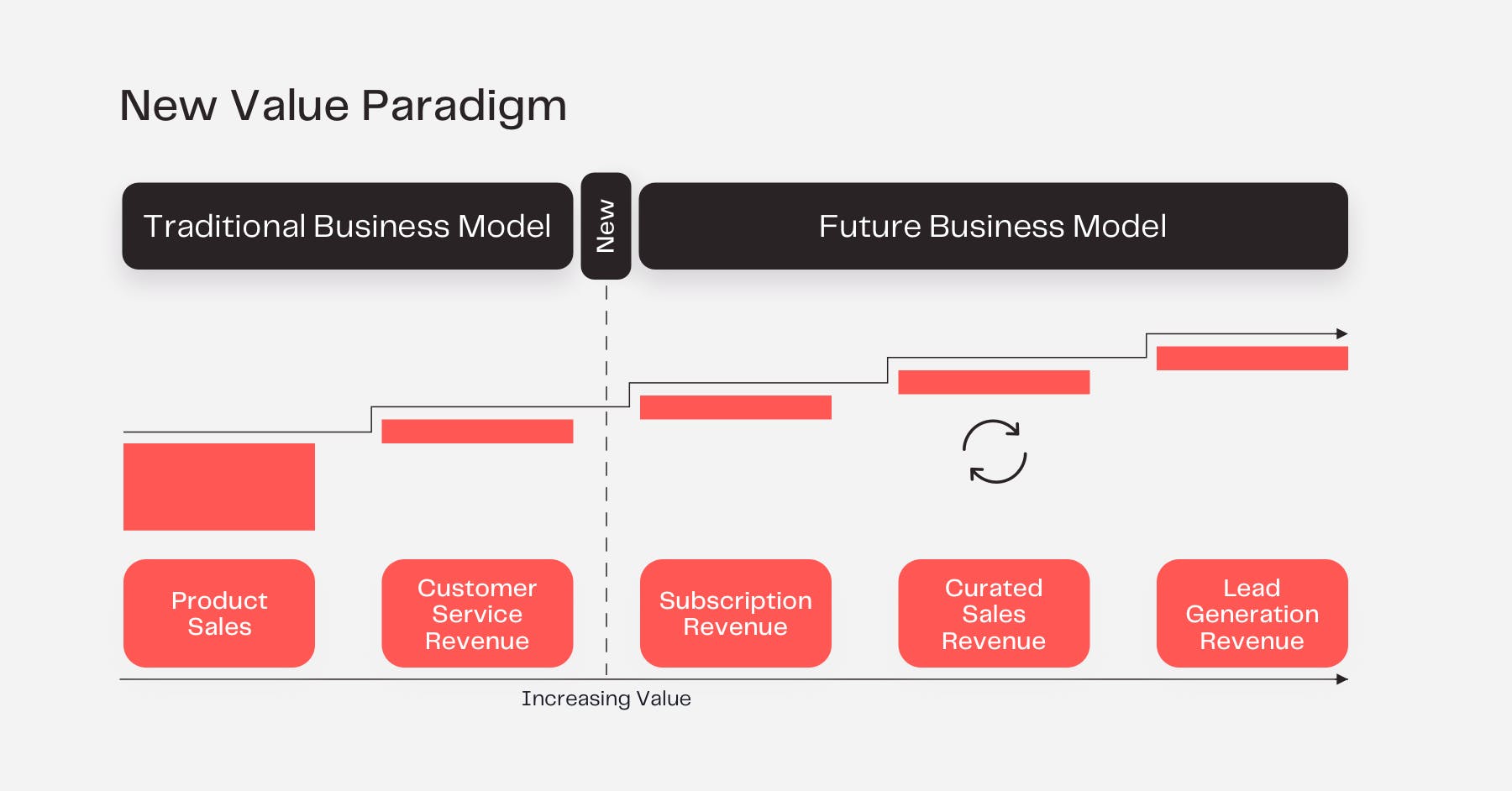
1. Hardware Development
New sensors are added to measure the machine functioning and data transmission for analysis at every component level. More fine-grained, real-time data will help in predictive maintenance and user billing. Machine redesign may be necessary for more configurable and modularized hardware components, especially for the components which are advancing on a year-on-year basis, such as camera pixels, compute power, 3G/4G/5G modems or laser technology, etc. Since hardware development is costly and less agile, pure HaaS providers generally only develop high-end equipment models and use software to configure the power and functioning of equipment for basic and premium subscribers.
2. Software Development
Whilst hardware innovation takes time to reach the market, software innovation is a chance for traditional equipment manufacturers to monetize their software offerings. Software development agility is enabling customer-centric value-added services in aftermarket equipment at any time.
2.1. UX, Onboarding, Tele-support
When interacting with a software or hardware product, whether it's a hard switch, an electronics display touch panel, voice control, or AR/VR, the most usable features should be simply presented and accessible with minimal interaction. To perfect such a design, a mechanism should continuously measure the user engagement of every UX component, including real user feedback from Day 0 (market launch). Initially, it may be a costly affair, but in the long term, it will cut the sales and development costs.
2.2. Usage-Meter
In combination with the output of equipment, fine-grained data from every component will precisely measure usage for billing and avoids the risk of any tampering of software or hardware components. A sophisticated usage meter is more crucial when the machine is not always connected to the network, and the user has already paid for the subscription. In this case, a permissible usage policy should be stored in a tamper-proof secure data storage in the machine itself.
2.3. Data analytics and Machine Learning
Data acquisition and analytics capabilities should be built in the very early stages of platform design to determine customer usage patterns, recommendations, rewards, anomaly detection, predictive and preventive maintenance, new services offerings, UX enhancements, and other organizational improvements.
2.4. Smart Contracts
Legacy platforms should be overhauled to add automated contract signing and SLA processing, billing, and dispute redressal.
2.5. API-First Platform
With Application Programming Interface (API) first design, XaaS providers have the opportunity to monetize the internal digital platform in the application service marketplace. Providing machine APIs for external developers can result in community innovation and more integrated solutions with complementary value-added services developed by external third parties.
2.6. Data Security and Privacy
At least for billing purposes, an unprecedented level of private data (for example the number of coffees consumed or the number of wash cycles completed) must be collected. The sharing of this information may be a concern for B2B customers. Assurance of high compliance standards, data security frameworks, and the non-sharing of data to third parties can help in addressing these issues.
3. Business Development, Sales and Marketing
As a XaaS provider, developing a support framework will assist in the transformation from a product-oriented business towards a service-oriented business:
- Partner with a complementary equipment provider, possibly combining an offer with a reseller.
- List offerings in XaaS product marketplaces where users bundle the different product offerings themselves.
- For B2B offerings, conduct thorough due diligence on a case-by-case basis, keeping in mind lifecycle costing analysis.
- Develop a plan that supports customers at every stage of the XaaS funnel. Customers engage with the business throughout the product lifecycle and not just a one-time sign-on previously applicable to traditional equipment sellers.
- Marketing efforts need to focus on the long-term customer relationship strategy.
4. Operations Team
Operations need to be revitalized with more equipment lifecycle management processes for equipment delivery, support, maintenance, refurbishment, and decommissioning. A digital platform and comprehensive training program are needed to achieve this.
Outlook: Sustaining the Future of Servitization
Businesses that pursue servitization as a strategy shift their primary focus from creating value by making and selling a product to creating value by delivering a service through a product. Those that fail to embed services in their products and deliver enhanced customer experiences that servitization promises to deliver—are going to be left behind.
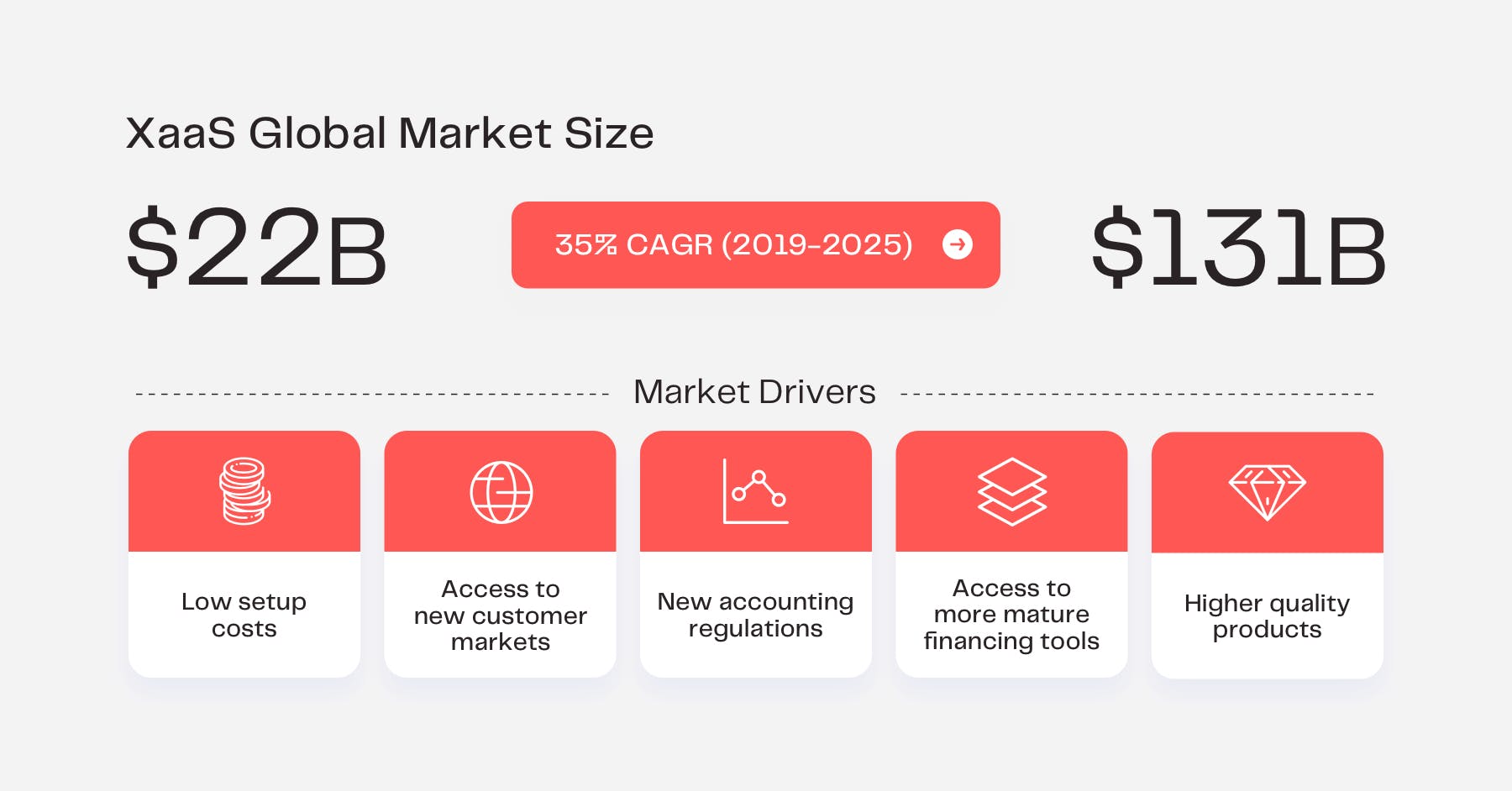
XaaS offers an unprecedented opportunity for companies to build stronger, long-term relationships with customers. As XaaS uptake rises and IoT (in particular), servitization models add new layers of intelligence to products, collect valuable data from customer usage, inform design and performance improvements, and test those improvements before rolling them out at scale.
XaaS is a strategic and operational blueprint that is already upending business and operational models, along with redefining the fundamental goals of core modernization. Transforming what was primarily a technical process of overhauling existing business products, processes, and legacy systems into a collection of services has created a new order of business that establishes greater efficiencies and engages customers, employees, business partners—and even entire markets—in new ways.

